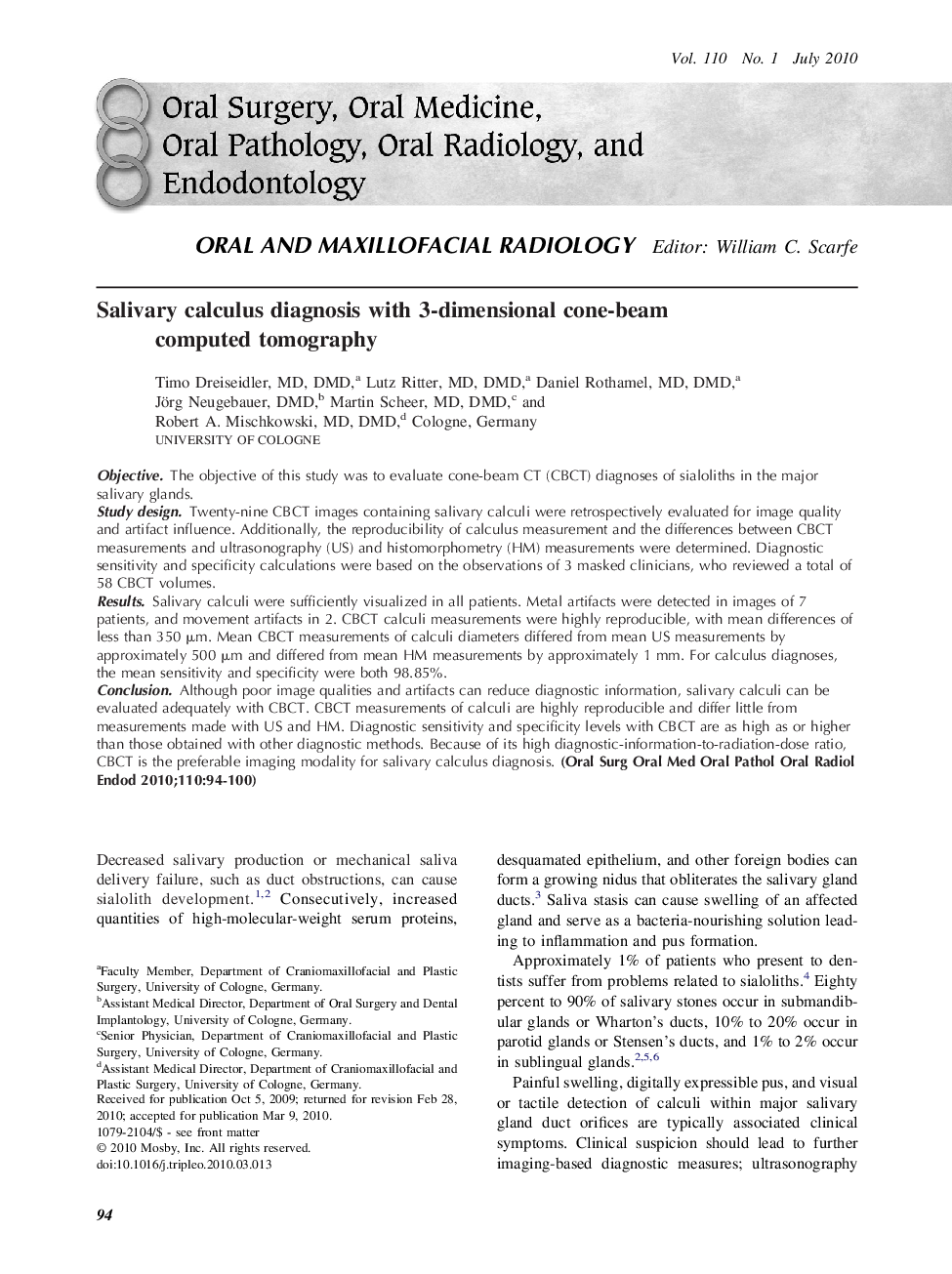| Article ID | Journal | Published Year | Pages | File Type |
|---|---|---|---|---|
| 3167558 | Oral Surgery, Oral Medicine, Oral Pathology, Oral Radiology, and Endodontology | 2010 | 7 Pages |
ObjectiveThe objective of this study was to evaluate cone-beam CT (CBCT) diagnoses of sialoliths in the major salivary glands.Study designTwenty-nine CBCT images containing salivary calculi were retrospectively evaluated for image quality and artifact influence. Additionally, the reproducibility of calculus measurement and the differences between CBCT measurements and ultrasonography (US) and histomorphometry (HM) measurements were determined. Diagnostic sensitivity and specificity calculations were based on the observations of 3 masked clinicians, who reviewed a total of 58 CBCT volumes.ResultsSalivary calculi were sufficiently visualized in all patients. Metal artifacts were detected in images of 7 patients, and movement artifacts in 2. CBCT calculi measurements were highly reproducible, with mean differences of less than 350 μm. Mean CBCT measurements of calculi diameters differed from mean US measurements by approximately 500 μm and differed from mean HM measurements by approximately 1 mm. For calculus diagnoses, the mean sensitivity and specificity were both 98.85%.ConclusionAlthough poor image qualities and artifacts can reduce diagnostic information, salivary calculi can be evaluated adequately with CBCT. CBCT measurements of calculi are highly reproducible and differ little from measurements made with US and HM. Diagnostic sensitivity and specificity levels with CBCT are as high as or higher than those obtained with other diagnostic methods. Because of its high diagnostic-information-to-radiation-dose ratio, CBCT is the preferable imaging modality for salivary calculus diagnosis.
